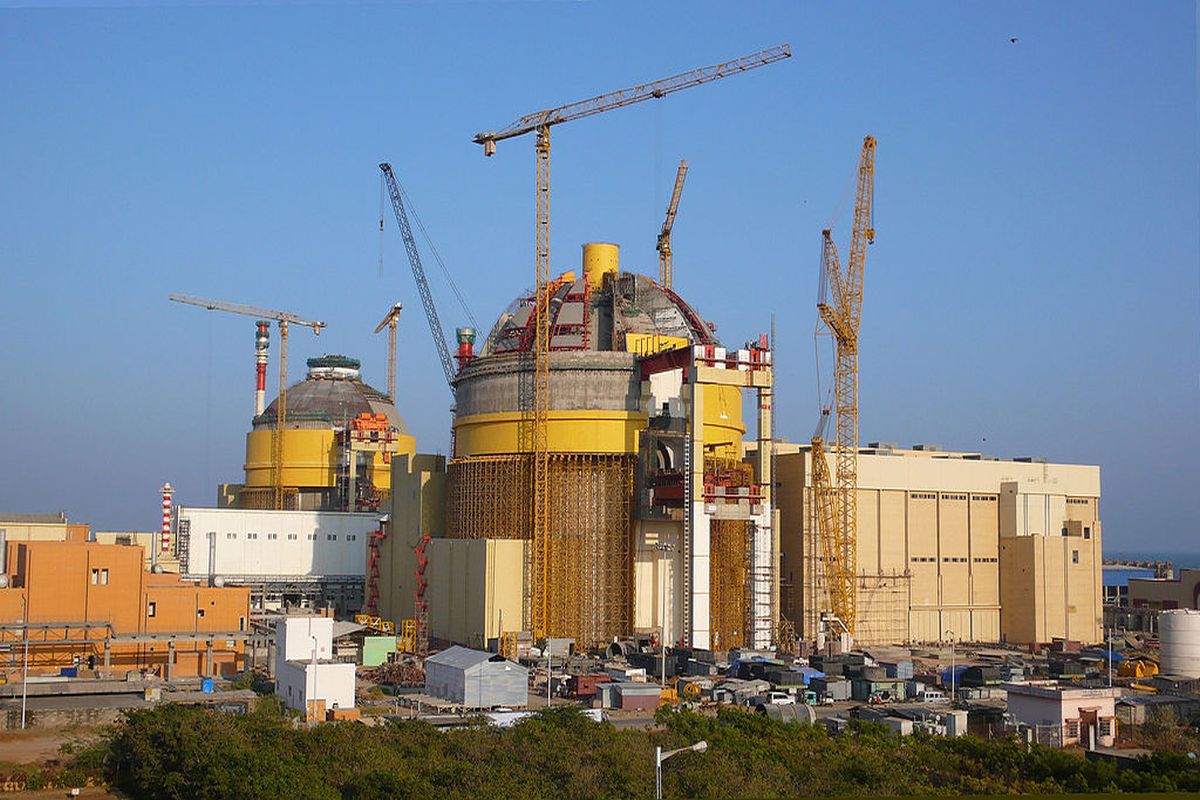“Make two-language formula successful before thinking about third language”: P Chidambaram
He further said that in Tamil Nadu, there are 52 Kendriya Vidyalayas which are run by Central Government.
The NPCIL is building a third reactor of the same type at Kudankulam which saw a year-long violent agitation by an anti-nuclear lobby in 2011- 2012.

Kudankulam Nuclear Power Plant. (Photo: Wikimedia Commons)
The startling data obtained by an NGO in Tamil Nadu and a subsequent expert’s opinion put questions over the robustness and safety of the 1000 MW unit-1 of the reactor of Kudankulam nuclear plant built by a Russian company.
The serious apprehensions regarding the unit came out even as the authorities of the Nuclear Power Corporation of India Ltd disclosed on Saturday that the 1000 MW unit-1 of the Kudankulam Nuclear Power Plant which was shut down in November 2018 due to technical faults may resume its operation in the next two days.
Advertisement
Some of the senior reactor engineers in the country are placing suspicion over the quality of the reactor. “Unit-1 for which works began in 2002 was commissioned in December 2014.
Advertisement
But this reactor has been facing problems since day one was commissioned and had undergone many breakdowns and closures. Unit-one has been shut down for most of the time since its commissioning and this is a matter of serious concern,” said an NPCIL engineer with decades of experience in designing and commissioning nuclear power reactors.
According to details collected by an NGO representing the anti-nuclear power brigade from the NPCIL under the Right to Information Act, unit-one had tripped 11 times since March 2016 and the unit-2 had tripped 19 times since March 2016.
According to the engineer who does not want to disclose his identity “by the time unit-one resumes operations, chances are that the unit-2 would conk-out. ‘This is what we have seen in the past,” he said.
The engineer said unit one has been described and projected by the Department of Atomic Energy as well as the NPCIL as the state-of-the-art reactor belonging to the Third Generation category.
“Since this was of 1000 MW capability, we were under the impression that the reactor may take time to synchronise to the Indian situation and the project managers were operating it cautiously. It was considered a normal delay as the crew of this a new reactor, which is of the highest capacity to be installed in India, would take time to familiarise with the system. But the shutdowns are causing apprehension,” said this reactor engineer.
Kamlesh Nilkanth Vyas, chairman, Atomic Energy Commission, had told reporters in April this year that there were some problems nagging the Kudankulam nuclear reactors.
“We are trying to address the problems,” said Vyas.
He agreed that there was something unusual with the multiple breakdowns and the resultant shut-downs of these reactors.
“You may realise that Kudankulam was the first 3+ generation plant, possibly in the world. There were initial problems. Even in Tarapur, there were similar problems initially. I believe NPCIL is putting in a tremendous amount of work and they will be able to overcome the difficulties,” he had said.
But according to the engineer, “the frequent shutdowns lasting for months altogether is not acceptable for any kind of nuclear reactors. There is something seriously wrong with the quality of the reactor and the DAE should immediately constitute a high-power body to undertake a thorough probe into the safety and security of these reactors.”
The NPCIL is building a third reactor of the same type at Kudankulam which saw a year-long violent agitation by an anti-nuclear lobby in 2011- 2012 which forced the DAR to suspend work for months. It took almost 12 years to commission the first reactor of the project due to these agitations and technical problems.
Advertisement